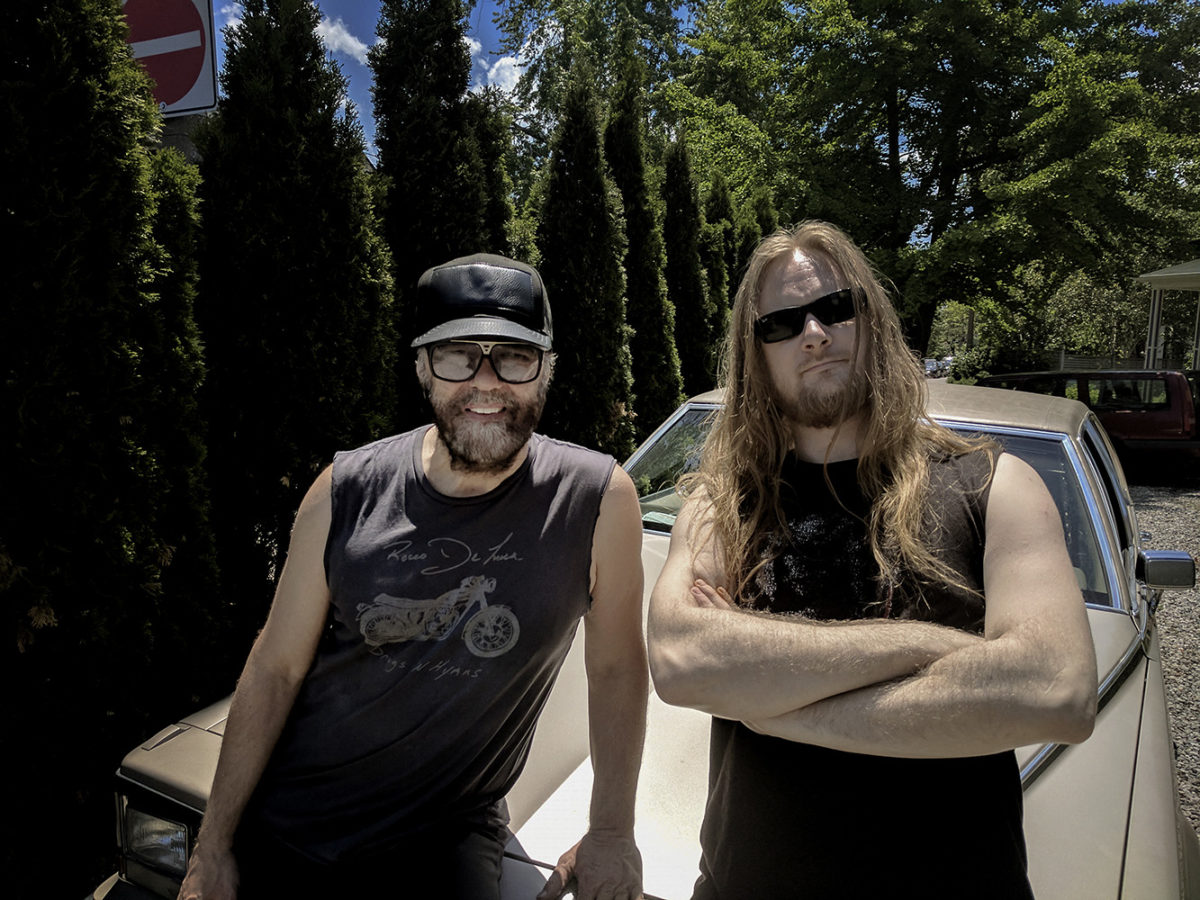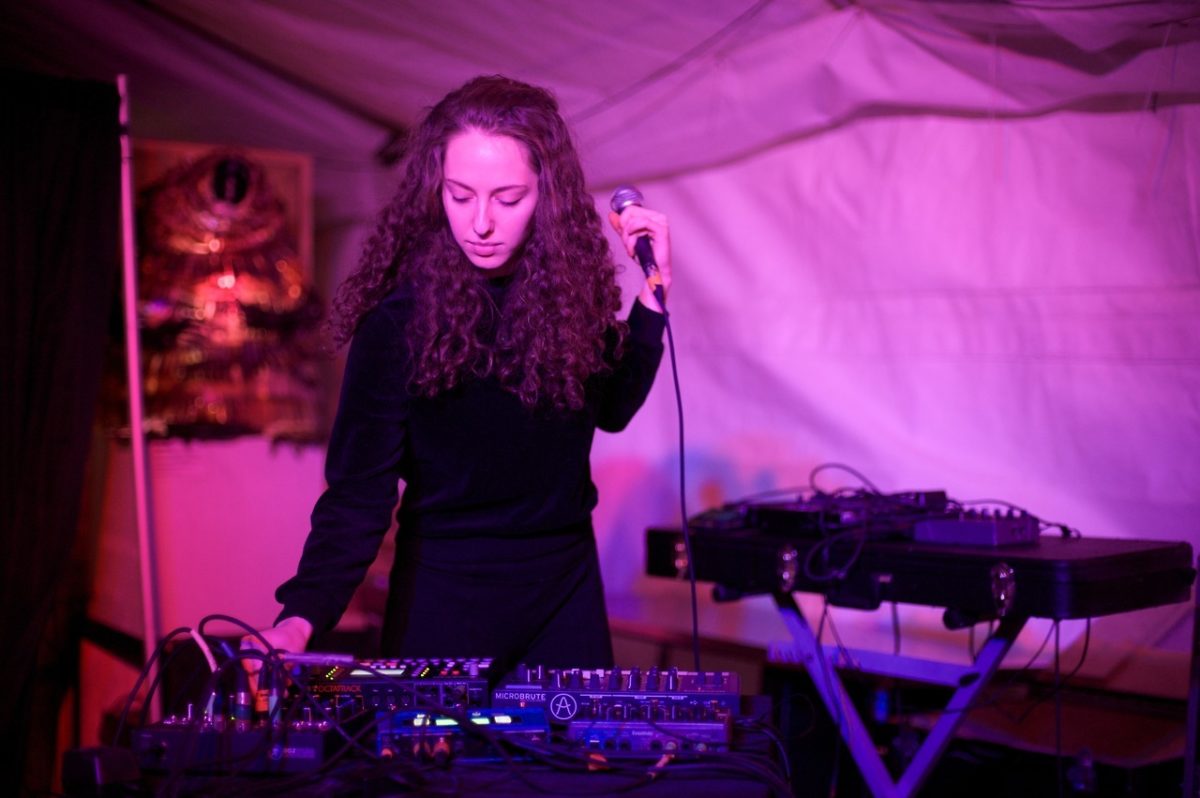Jun
14
with Ensemble LPR & Joanne Pollock
Thu June 14th, 2018
8:00PM
Main Space
Minimum Age: 18+
Doors Open: 7:00PM
Show Time: 8:00PM
Event Ticket: $25 / $30
Day of Show: $40
LPR X: Venetian Snares x Daniel Lanois

Daniel Lanois official site | Daniel Lanois on Instagram |
Daniel Lanois on Twitter | DanieDaniel Lanoisl Lanois on Facebook
Venetian Snares on Facebook | Venetian Snares on Bandcamp
| Venetian Snares on Twitter | Venetian Snares on Soundcloud
Aaron Funk a.k.a. Venetian Snares hails from Winnipeg in Canada. Since his debut 12″ in 1999 on a small Minneapolis label he has risen out of the drill’n’bass/breakcore mire to become one of the most astonishing and popular musicians working in the experimental electronic sphere including Squarepusher, Aphex Twin and Boards Of Canada. With a slew of releases on Planet Mu from 2001 – 2011, and his most recent releases on his own Time Sig imprint, Snare’s is a producer you can never put your finger on – infamously unpredictable and ever-challenging Mr. Funk never fails to blow minds and keep blasting until the bitter end.
Daniel Lanois is a name that deserves to be mentioned alongside the finest sonic experimenters of the 20th century – and the 21st century too. Yes, he’s been willing to step back into the background as others take the limelight, but that shouldn’t diminish his contribution, which ripples throughout practically every style and sound of the modern era. Whatever you’re listening to – whether it be acoustic or electronic, roots or futurist, underground or pop – if you listen closely you’ll hear traces of the sonic signatures of Daniel Lanois. And what’s more he’s still experimenting as eagerly as he ever has. At a point when most musicians with anything resembling his level of success would be resting on their laurels and playing on old successes, he still has more hunger for the new than people a third his age, and as a result is creating music as beautiful and new as ever before.
Daniel grew up in Hull, Quebec, a town known best for gambling and drinking – “on the left side of the tracks” as he puts it. His family were not well off, but there was a strong musical foundation from the beginning: his father played fiddle, his mother sung, and there were regular family gatherings where live music was at the centre of things. “We didn’t have money to go out,” he explains, “and there wasn’t too much happening, so what we’d do is have get-togethers where everyone – uncles, aunts, anyone in the wider family – played music together, it was just what we did.” This put him at the heart of a living, breathing roots and folk music tradition, even as he was discovering his own tastes from the pop culture of the time. As his childhood went on, he soaked up Motown, R&B and rock’n’roll, then the psychedelic explosion, and by the time high school was approaching, he was already fixed on music as the only game worth pursuing.
Since his parents broke up – his mother took the kids away in the car and never looked back – he’d been pretty much allowed to run free, something he says “is the best upbringing you could ever have.” Allowed to follow his own desires, while Daniel was still in his teens, he and Bob set up a studio in the basement of their new home in Ontario, and music became a career before he could even complete school. He’s never looked back since: from the very beginning, Daniel built a reputation with local musicians as someone who could work the studio but thought as a musician, and this steadily spread across Canada, as he moved to bigger premises and bigger jobs. The 1970s were spent as a journeyman producer, honing his technical skills – until towards the end of the decade, his reputation reached the ears of Brian Eno who recruited him to help with his Ambient series of albums.
The work they did on those albums together, and with musicians like keyboardist Harold Budd, has entered into legend. They perfected the idea of studio-as-instrument, making every part of the production an integral component of the overall texture, and striking the perfect balance between avant-garde experimentation and straightforward pleasure in sound that Daniel has continued to pursue in everything he’s done since then. Daniel’s well-grounded, no-nonsense approach to the studio proved to be the ideal counterpoint to Eno’s cerebral flights of fancy – with common ground in their shared mischievous love of spontaneity. The Ambient albums reached a culmination in 1983’s Apollo, in which Daniel’s slide guitar glides through the soundscapes, evoking the weightlessness of space. These sounds have continued inspiring ambient and electronica experimenters ever since, from The KLF’s epoch-defining Chill Out in 1990 through untold dancefloor and downbeat records right up to the present day.
And Daniel continued to experiment too. Though his connection with Eno would lead him onto working on some of the biggest selling records of the time, by megastars as big as U2 and Peter Gabriel, his approach in the studio was always as exploratory as when he was making the Ambient albums. Indeed, often this is what would make his productions so unique: there was never a formula, just a determination to find the right approach for the right artist. Working with Bob Dylan in 1987, for example, he brought out a Roland TR-808 drum machine to use as a compositional tool – kickstarting the groove of the Oh Mercy album, and helping make it one of the most dramatic creative reinventions in Dylan’s career. A few years later, he and Eno helped bring the electronic music culture that they themselves had helped to inspire into U2’s Achtung Baby.
This refusal to sit still, this constant hunger for new ideas and techniques, has defined Daniel’s solo work too. Though his albums have been few and far between, every one has dug deep for inspiration and roamed widely in its sound and style: as much as someone who counts Lee “Scratch” Perry as a literal neighbour in Jamaica should. Whether exploring his French Canadian identity and folk heritage in bilingual songs or taking mainstream rock themes into outer space with manipulations as strange as any electronica, shoegaze or post-rock young guns were managing at the time, every record has a questing spirit to it. Most recently, he has hit a rich creative seam, and on the rhythmically complex Flesh and Machine and now on the gorgeous, weightless Goodbye to Language, he is going all the way with that experimentation. On both of these records he connects the most forward-looking instincts that constant contact with studio technology can develop with the natural rootedness that only a lifetime in music can give a person.
Goodbye to Language is the perfect joining of the dots, from the music as a constant background of his childhood, through the world-changing experiments of his early days with Eno, through his flights through the most rarefied atmospheres of the mainstream of music. Constructed entirely from the sounds of the pedal steel guitar, Daniel on the pedal steel and his mate Rocco Deluca on the lap steel with compositional rigour that recalls the 20th century dreamscapes of Ravel and Debussy, with a sense of sonic futurism and yet also with the naturalness that can only come from someone rooted in centuries of grassroots music. And while fusions of influence can sometimes lead to homogenisation in the blending of source material, this record does precisely the opposite: it’s about highlighting the highest common factors from a lifetime of influences. Or as he succinctly puts it: “I operate under the banner of soul music – music that just feels right and comes from a truthful place.” When a musician with as much expertise and experience as Daniel tells their own personal truth, you should really listen closely.
Photo Credit: Sebastién LeBlanc
Ensemble LPR

Ensemble LPR official site | Ensemble LPR on Twitter | Ensemble LPR on Facebook
Named after and headquartered at the acclaimed New York City venue Le Poisson Rouge, Ensemble LPR is an assemblage of New York’s finest musicians. The group personifies the venue’s commitment to aesthetic diversity and artistic excellence.
Ensemble LPR performs an eclectic spectrum of music—from works by the finest living composers, to compelling interpretations of the standard repertoire—and collaborates with distinguished artists from classical and non-classical backgrounds: Timo Andres, Simone Dinnerstein, San Fermin, Daniel Hope, Taka Kigawa, Jennifer Koh, Mica Levi, David Longstreth (of Dirty Projectors), John Lurie, Ursula Oppens, Max Richter, André de Ridder, Christopher Rountree and Fred Sherry, to name a few.
In January 2015 Ensemble LPR made its Deutsche Grammophon debut with Follow, Poet, featuring the music of Mohammed Fairouz and the words of Seamus Heaney and John F. Kennedy. Ensemble LPR’s acclaimed Central Park performance last June, part of the 110th Anniversary of the Naumburg Orchestral Concerts.
In 2008 Le Poisson Rouge changed the classical music landscape, creating a new environment in which to experience art music. In doing so, Le Poisson Rouge expanded classical music listenership. The New York Times has heralded Le Poisson Rouge as “[a] forward-thinking venue that seeks to showcase disparate musical styles under one roof” and “[the] coolest place to hear contemporary music.” The Los Angeles Times raves, “[The] place isn’t merely cool…the venue is a downright musical marvel.” Le Poisson Rouge Co-Founder David Handler brings this same ethos to Ensemble LPR, of which he is Founding Executive & Artistic Director.
Joanne Pollock

Joanne Pollock official site | Joanne Pollock on Facebook | Joanne Pollock on Bandcamp | Joanne Pollock on Soundcloud | Joanne Pollock on Twitter
Joanne Pollock uses her unique attentiveness to detail to weave intricate electronic fantasies. Using lush vocal melodies, she creates mythical dreamscapes with a “presence that demands to be heard” (Impose) and that are “serene, peaceful, hypnotizing, and hooky” (Noisey).
One half of Poemss (Planet Mu) with Venetian Snares, Joanne released her debut solo LP, Stranger, on Timesig/Planet Mu 2017. It received praise from publications such as Exclaim! who noted “Pollock never shies away from the unconventional. Yet, there’s enough warmth, folk, pop and soul here to satisfy listeners of virtually any stripe.”
From Toronto but now based in Winnipeg, she has performed live across Canada and in Europe.

